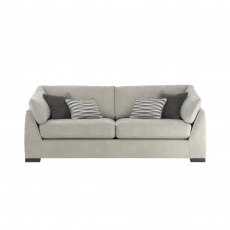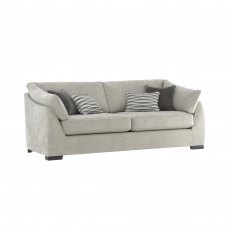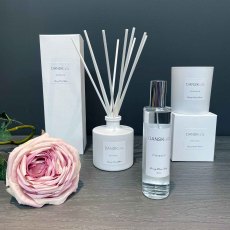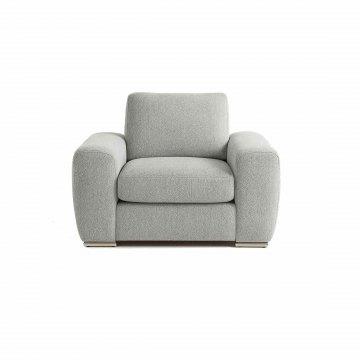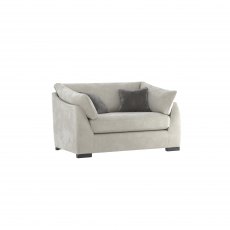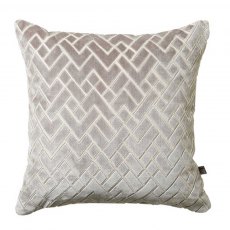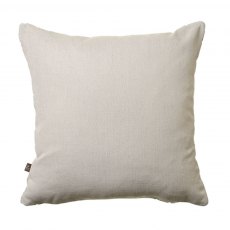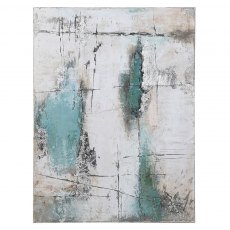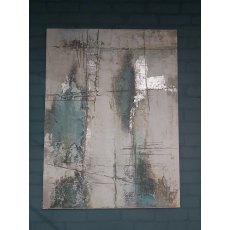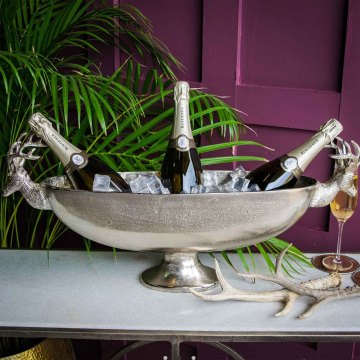Large Resting Stag Punch Bowl / Wine Cooler
The magnificent antlers of the Resting Stag Punch Bowl hold a polished stainless steel bowl aloft. Use it to serve delicious punch as the centrepiece of your party table or fill it with ice to chill bottles of wine, Champagne, and beer.
Product Details
Large Resting Stag Punch Bowl / Wine Cooler in a Nickel Plated Aluminium & Stainless Steel Bowl.
Also available in a smaller size.
Not Dishwasher Safe - See care guide below.
Product Information
Dimensions
- Length: 58cm
- Height: 72cm
- Depth: 42.5cm
Caring for Your Stag Resting Punch Bowl
Nickel Plated Items
What is Nickel Plate?
This is a method whereby a base metal such as brass is coated in nickel usually by the process of electrolysis.
Caring For Your Nickel Plated Items
Nickel plated items should be cleaned using warm, soapy water and a soft cloth. Then rinsed thoroughly with clean water. The item should then be dried immediately with another dry, soft cloth. If the items requires further cleaning a soft cloth and metal cleaner such as Maas Metal Polishing Creme or a Cape Cod Metal Polishing Cloth can be used. These can be purchased in various online and high street shops.
Stainless Steel Bowl
What is Stainless Steel?
"Stainless" was a term given to stainless steel when it was invented in the 1920's to differentiate between ordinary steel. Stain resistant steel might be a better name, as it is the additives in the steel, which gives it its protection, and therefore, makes it an ideal material for the purpose of manufacturing cutlery. It was adopted as a generic name and now covers a wide range of steel types and grades, used to make products that need to be resistant to corrosion or oxidation. Our stainless steel cutlery and other tableware pieces are made from 18/8 Stainless Steel
Why is Stainless Steel 'Stainless'?
Stainless steels are iron alloys with a percentage of chromium content. The steels are termed 'stainless' as chromium-rich, oxide film forms naturally on the surface of the steel. It is this protective film, which makes the stainless steel resistant to corrosion. Stainless steels cannot be considered indestructible, however, as under certain conditions the protective film can be broken down. This is why it is important to carefully select the appropriate grade of steel for a particular purpose.
18/8 is an "authentic" stainless steel type, and is one of the most commonly used. It contains 18% chromium, and the addition of 8% nickel makes it considerably more durable.
Caring for your Stainless Steel item
Follow the instructions below to keep your cutlery in prime condition. Rinse cutlery as soon as possible after use to remove food particles. If washing by hand use warm, soapy water, rinse immediately in hot water and wipe dry with a soft, clean cloth. When using a dishwasher, follow the manufacturer's instructions concerning the type and quantity of detergent used, and load cutlery in the compartment provided to reduce scratching. Wash cutlery as soon as possible after use and remove when the dishwasher has completed its cycle. Wipe dry with a soft, clean cloth. In some areas hard water may leave calcium spots, or certain foods and constant use of dishwasher may cause tarnishing. These stains may be removed using lemon juice, vinegar or a stainless steel cleaner.
Hand washing
Ensure the detergent is completely dissolved in the water before washing the cutlery. Rinse in clear water and dry with a soft cloth or tea towel. Store immediately. Do not soak your cutlery or leave unwashed overnight.
- Right : Do not use a powder cleaner instead choose a cream or liquid detergent e.g. fairy liquid.
- Right : Only choose a stainless steel cleaner for stubborn stains.
- Right : Rinse cutlery after contact with acids or salt to prevent corrosion.
- Right : Pay particular care to knife blades as these can be prone to increased corrosion due to a higher carbon content, used to achieve a sharper cutting edge.
- Right : Hand made cutlery styles with more intricate handles need to be cared for by thorough drying. Soap deposits left from drip-drying around the handle area can cause rust deposits to form.
- Wrong : Do not use wire wool or abrasive cleaners, this can cause scratching and will eventually remove the cutlery's shine.
- Wrong : Do not continuously soak or leave in damp surroundings as this may cause staining and corrosion.
Common salt, vinegar, and acids present in some foods, bleaches & some harsh detergents can all seriously damage the cutlery if left without rinsing after use. Even mineral salts in tap water can cause pitting and staining.
Delivery
Please see our delivery information page for more detail
Cancellations & Returns
Please see our cancellations & returns page for more detail
Collect
This item is available for collection.
Home Delivery
UK mainland delivery from FREE
Ask a question
We're were to help
Write a review
Share your experience

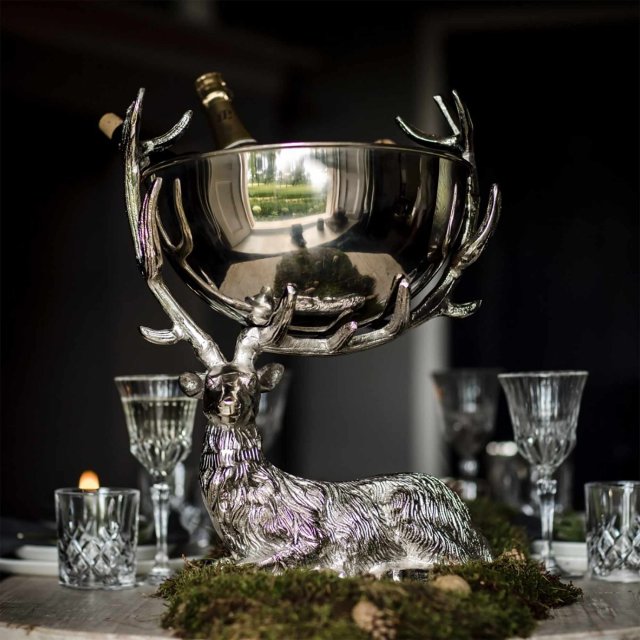
 Available (approximately 2 weeks for delivery)
Available (approximately 2 weeks for delivery)
